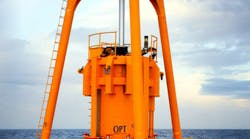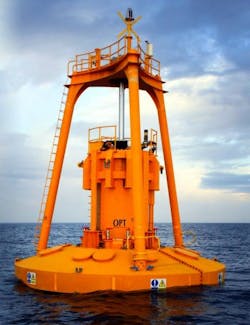At the center of this project is Ocean Power Technologies’ (OPT) PowerBuoy wave-energy-converter technology. The wave-generation system uses a “smart” oceangoing buoy that moves freely up and down with the rise and fall of waves. The resultant mechanical stroking is converted via a power take-off to drive an electrical generator. That wave power is then transmitted to ground through an underwater power cable. Sensors on the buoy continuously monitor its subsystems and the surrounding ocean environment. They can be installed using existing marine vessels and infrastructures and have a very low surface profile.
The 62.5-MW peak power wave-energy generation project will be built off the coast of Victoria, Australia. It will be completed in three stages with the first stage producing approximately 2.5 MW peak power. Once completed, it is expected to produce enough energy for 10,000 homes. This falls in line with Australia’s goal of 20% renewable energy by 2020, which includes support from the Australian Renewable Energy Agency (ARENA). It is estimated that this project will save 37,000 tons of CO2 a year, generating a total of 75,000 MW hours annually.

